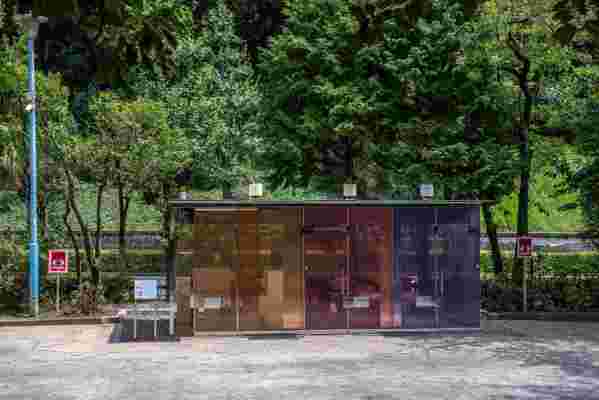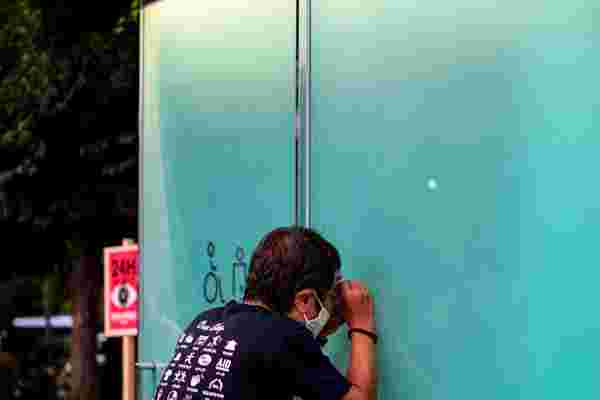The COVID-19 Pandemic Has Shigeru Ban Reimagining Tokyo’s Public Toilets
Over the years, Pritzker Prize–winning architect Shigeru Ban has made a name for himself as a pioneering designer of dynamic spaces that emphasize materials like cardboard and paper tubing. With such dynamic projects as the Japanese pavilion at Expo 2000, La Seine Musicale, and the Aspen Art Museum, Ban’s work is often forward-thinking. With a variety of cultural spaces spanning from Germany to New Zealand to his name, the last place one might expect to find Ban’s work is tucked away in two small Tokyo parks. What’s more, one probably wouldn’t expect those works to take the form of public bathrooms.
And yet, that’s precisely the nature of Ban’s latest project, the Tomei Tokyo Toilet . Consisting of a series of accessibly designed bathrooms housed within four walls of bright, yet somewhat muted multicolored glass, Ban’s architecture is in harmony with the surrounding natural area, lighting up the park “like a beautiful lantern” at night.

Tokyo’s newest public toilets allow users to easily check cleanliness and occupancy from the outside, both during the daytime and nighttime.
More than simply looking pretty, the project harmonizes form and function, fitting within what Ban describes as his usual “problem-solving design” approach. Specifically, the design addresses what the architect sees as the two most pressing issues when it comes to engaging with public bathrooms in a space like a park: determining whether or not it is clean and currently in use.
Using what the project’s website describes as “the latest technology,” the glass surrounding each of the separate men’s, women’s, and handicap-accessible stalls of the bathroom will be transparent when unoccupied, allowing anyone to assess its cleanliness without stepping inside. As soon as the door is locked, however, the glass becomes completely opaque to provide privacy, while allowing others to know the toilet is occupied.

The windows turn opaque when the toilet is occupied, not allowing anyone to see inside.
Ban isn’t the only prominent architect or designer to apply their talents to this particular purpose. Part of a broader “Tokyo Toilet” project spearheaded by the non-profit Nippon Foundation, Ban is one of 16 creatives participating in the initiative. In fact, Ban’s not even the only Pritzker Prize winner involved: Fumihiko Maki’s toilet in Ebisu Park also debuted recently, while a similar contribution by Tadao Ando will be realized in early September, and a Toyo Ito–designed toilet is scheduled for 2021.
With an overall project orientation towards accessibility and inclusivity, Ban’s design and those of his contemporaries should provide further proof that functional, forward-thinking design can still be beautiful—even when it comes to what we tend to regard as some of the least beautiful public spaces.